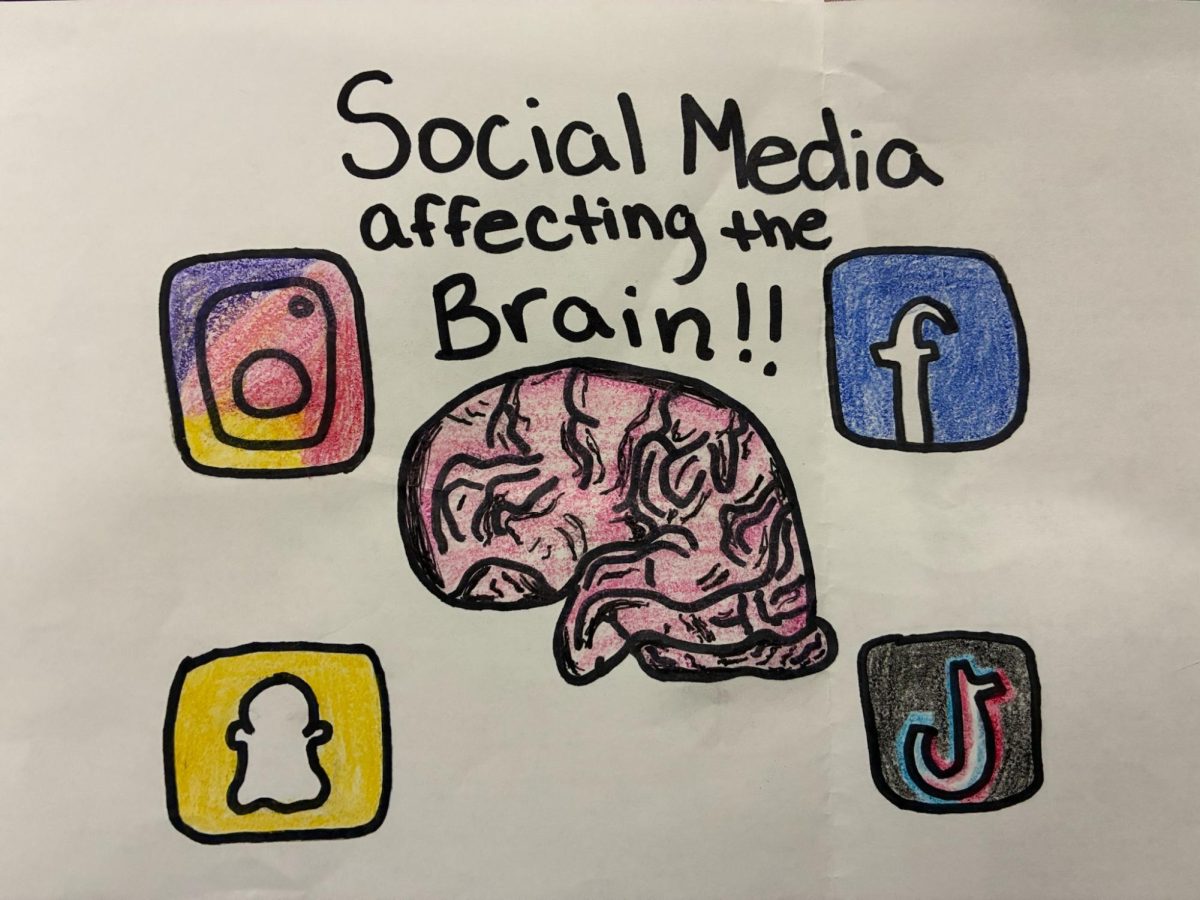Most teenagers hate to admit it, but social media affects everyday life. Comparison, jealousy, competition, and judgement are the top four things that pass through a person’s mind every time they open a social media platform. Not only does this affect everyday life, but it can take a toll on one’s future by changing opinions and thoughts.
While most social media platforms create a minimum age limit of 13 years old, there are kids younger that use these apps daily. The Common Sense Census shows that kids, as young as eight years old, struggle with their mental development due to the use of everyday social media. Starting young kids on social media is a poor decision due to the lack of development their brain has at this point.
Excessive use of social media apps can lead to sleep disruption, a failure in real life interactions with others, addictive behaviors, and overall impacting the well being of your physical health. In regard to the mental side of it, social media could also increase the risk of anxiety and depression, low self esteem, and a distorted self image.
According to the Social Identity Theory, teenagers love to be included in groups and hate the feeling of social rejection. This leads children and young adults to adapt their personality based on how others will think of them. The effects of this switch makes most teenagers feel isolated due to the fear of judgment and possible bullying situations.
Cyberbullying is an everyday issue that is not talked about enough. Not only is cyberbullying dangerous for a teenager’s mental health, but it puts the rest of their life at risk. Almost every social media is a constant platform for communication which increases the spotlight for a target. BMC Psychology states that there is a positive correlation between “cyberbullying victims, anxiety, and depression” due to the use of social media.
What can teenagers do?
The most effective way is placing one’s phone on “Do Not Disturb” Mode to limit the temptation of using social media. Do Not Disturb can help quiet the brain by reducing stress levels, improving focus and productivity, and can lead to a better mental well-being.
Other ideas are to find alternative things to do to enjoy free time. Exercise, art, and joining clubs or participating in groups can not only be enjoyable, but change the habit of checking phones and social media regularly.
What can parents do to fix this?
Modeling healthy behaviors is essential to a child’s development so why not try it with a cell phone? Most kids adapt to the way their parents behave, so set a good example for them. Putting phones away at the dinner table or during a family activity can encourage children to do the same.
Planning family activities and engaging your child in conversations can keep open communication about what is going on in their world.
Students also have access to the Grade Level Office located on the 2nd floor above the cafeteria. The Woodlands High School has some of the best professional counselors that love doing their job, whether it’s simply listening to a student, or helping a student determine what the next best step if they feel like social media is having a negative affect on their lives.









